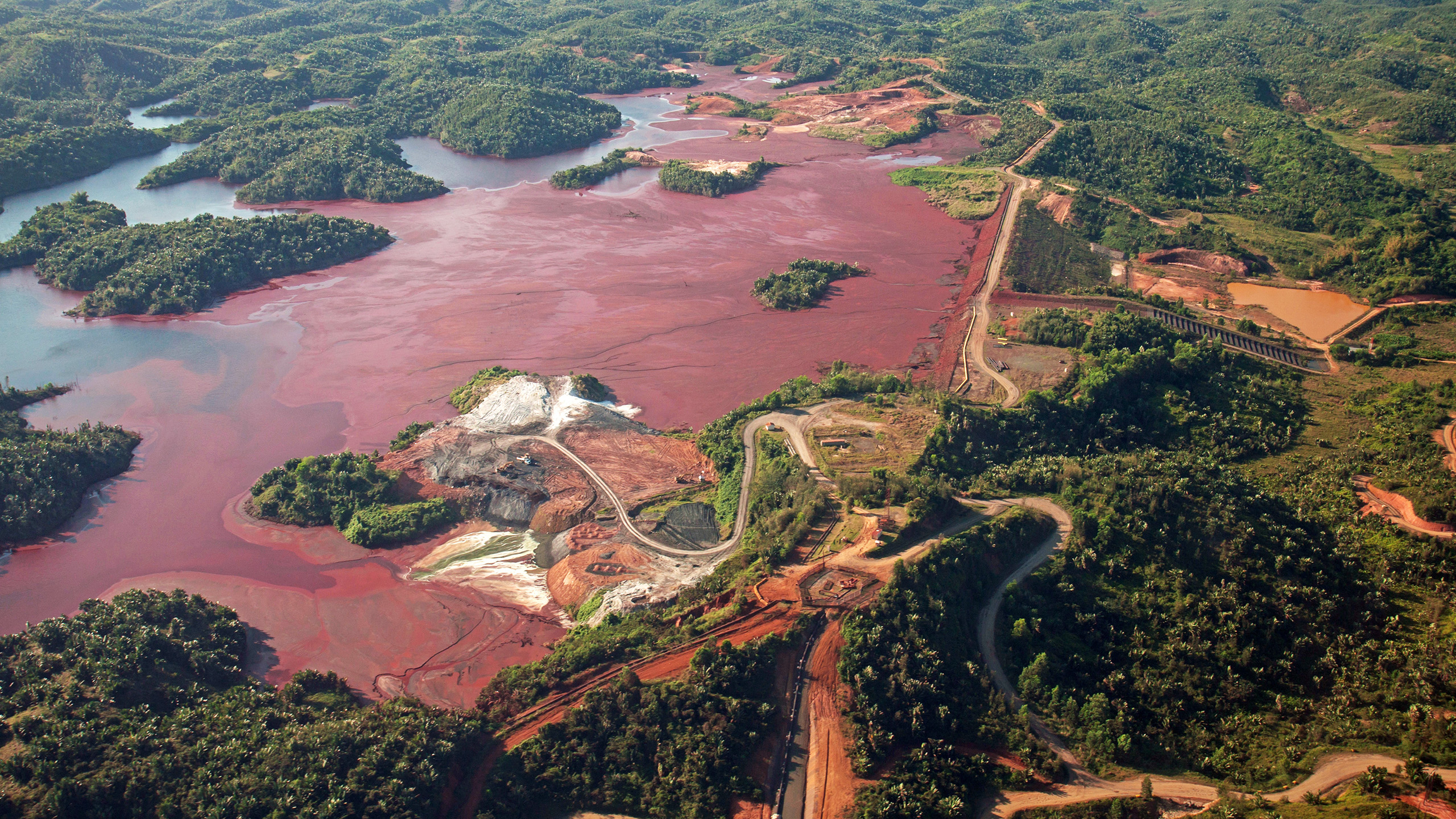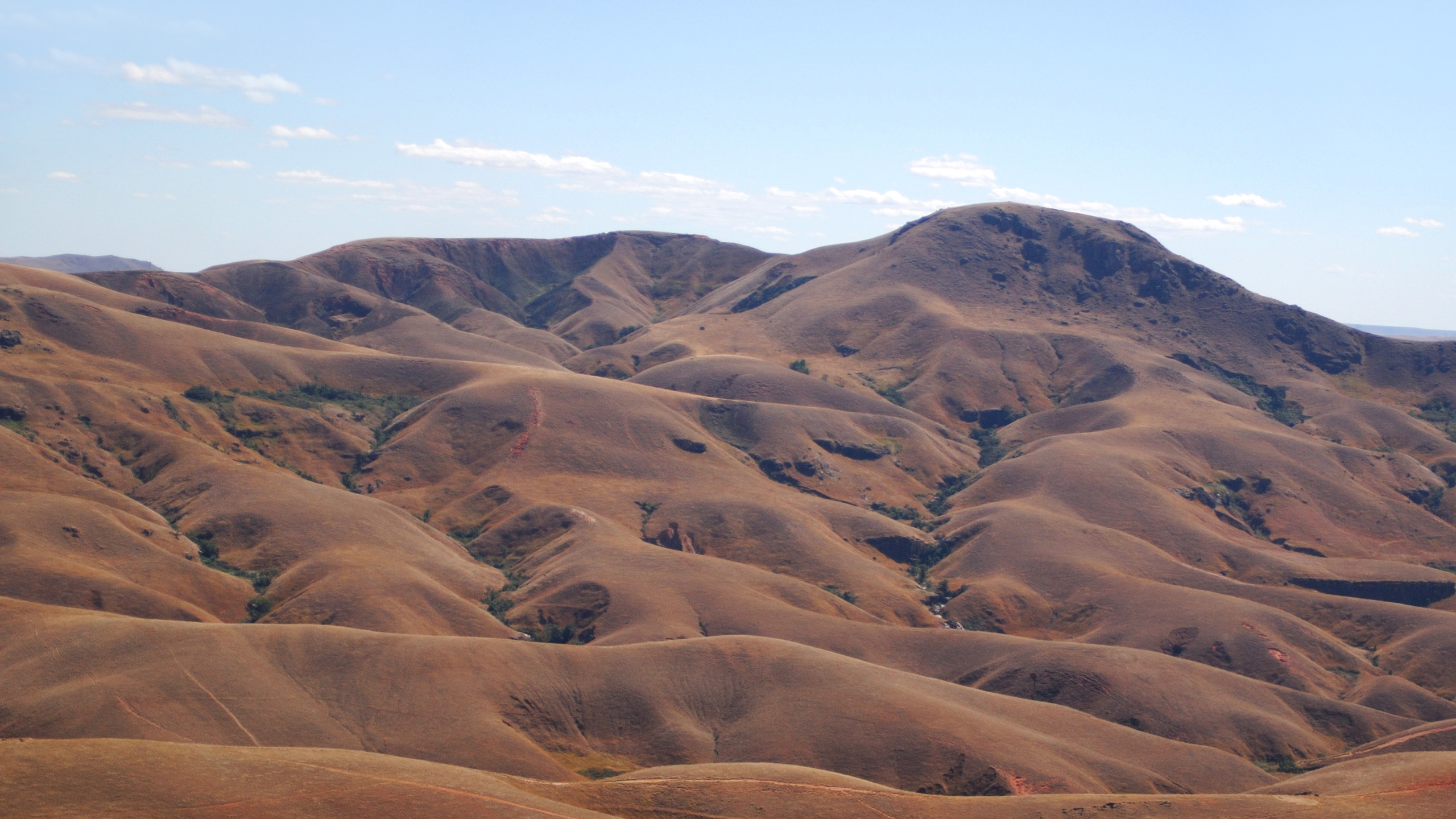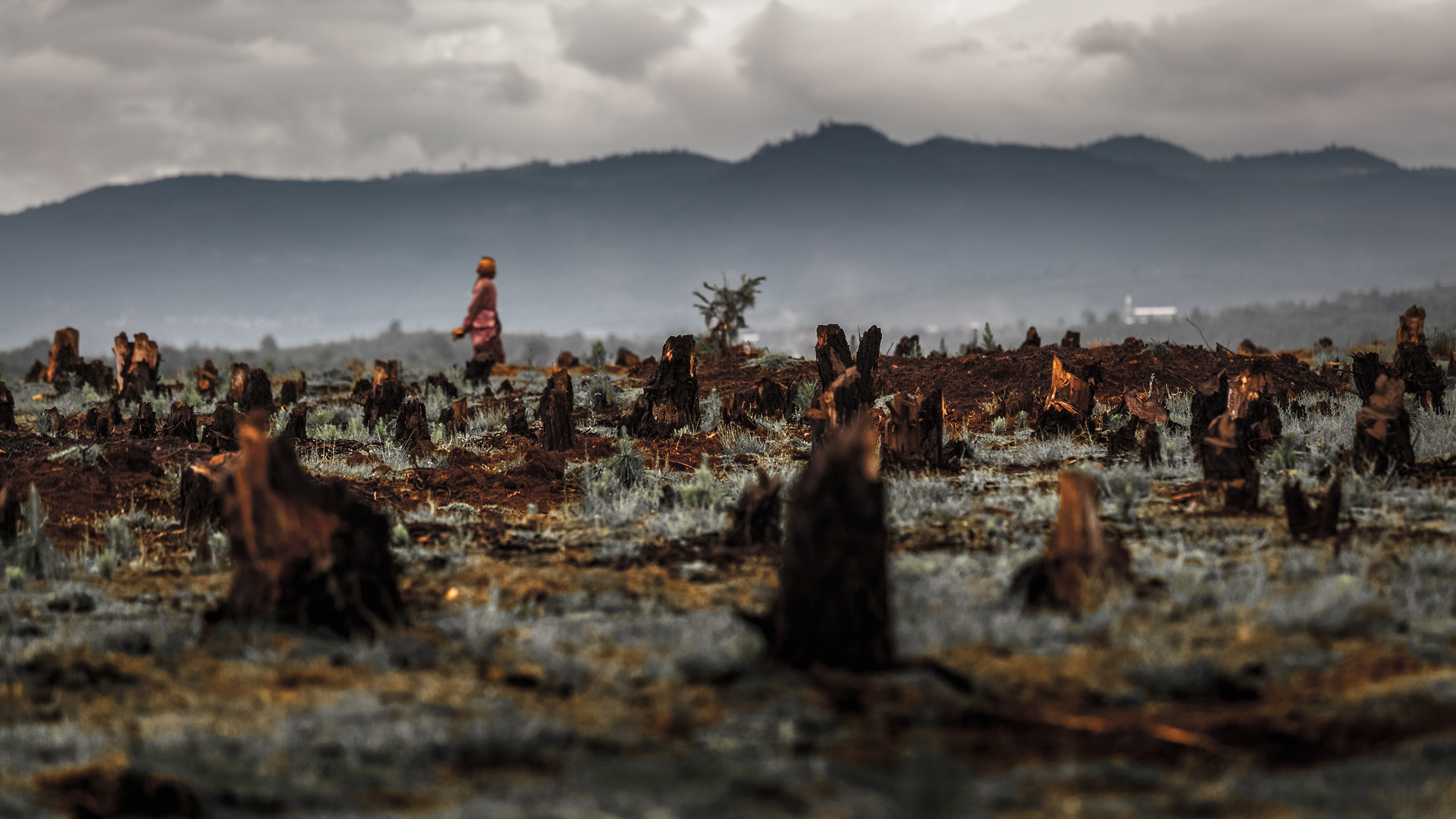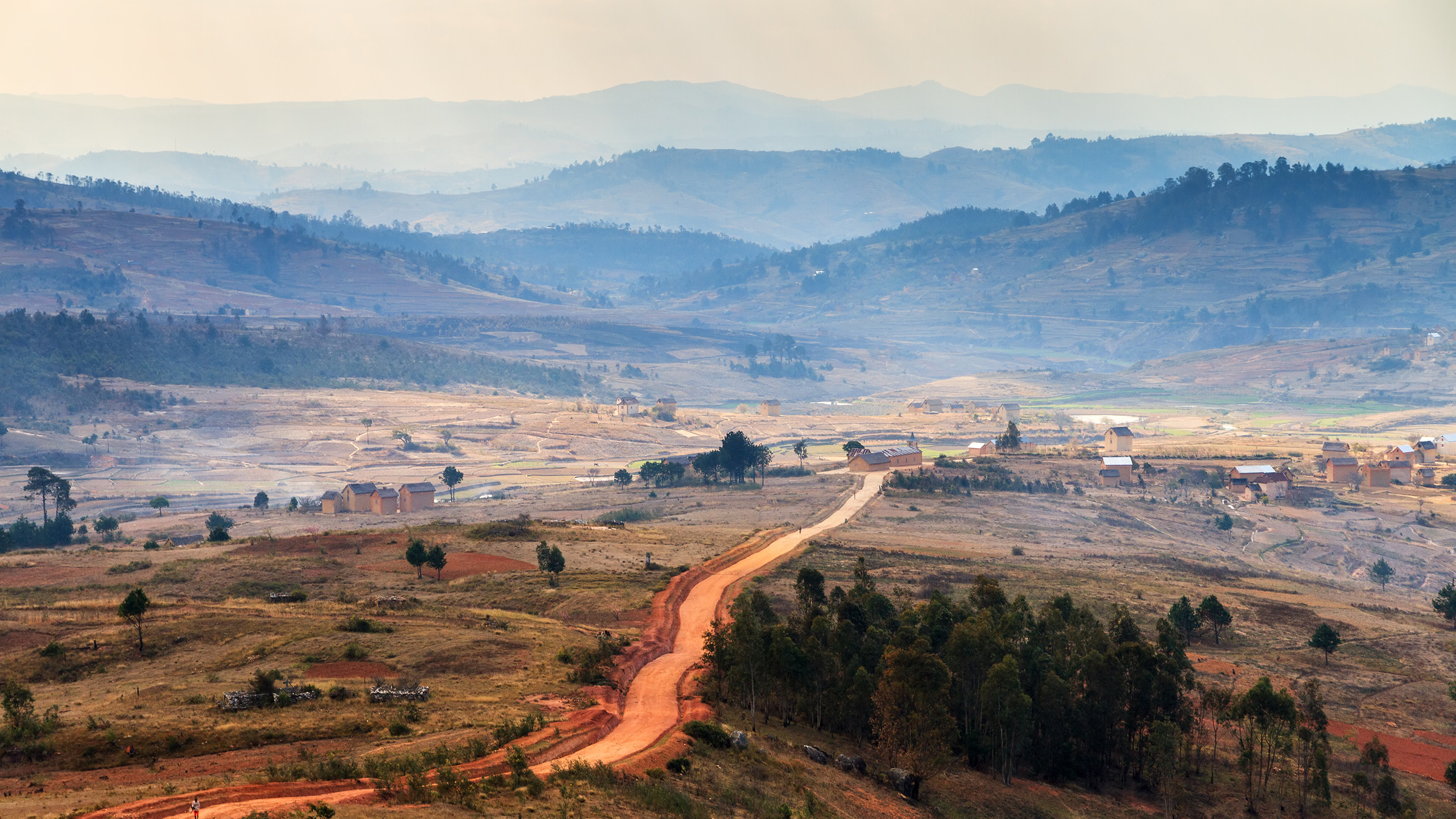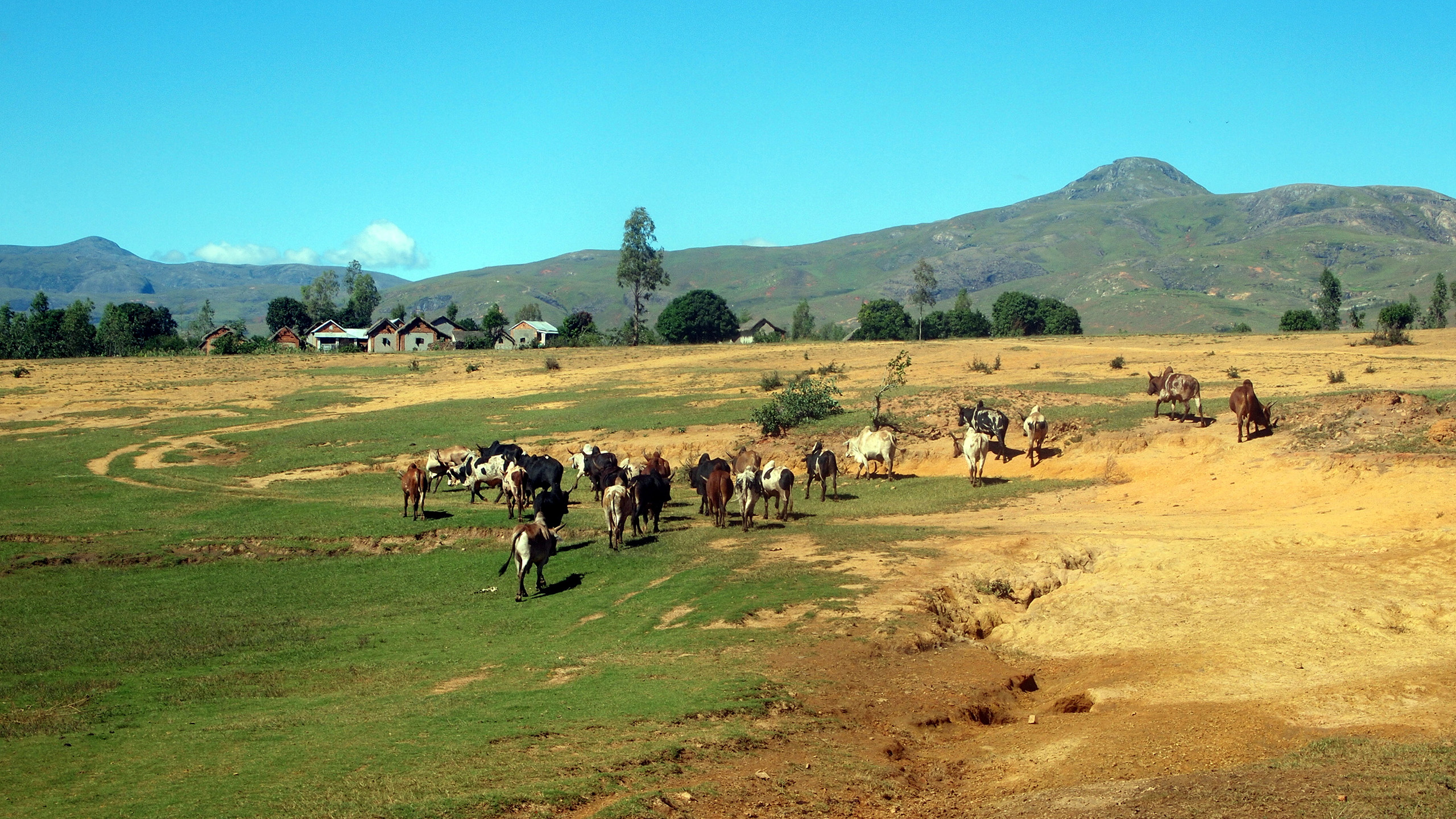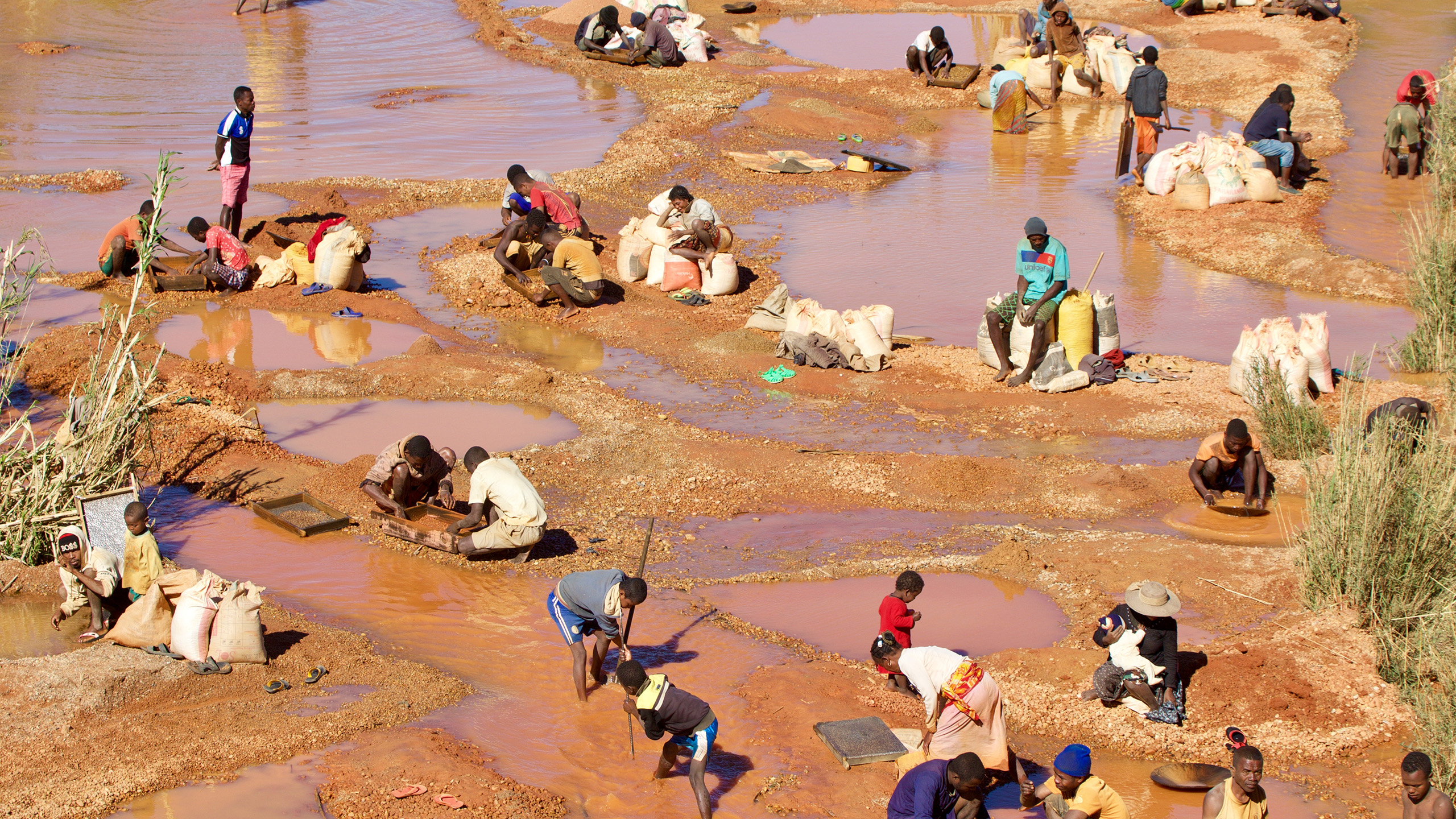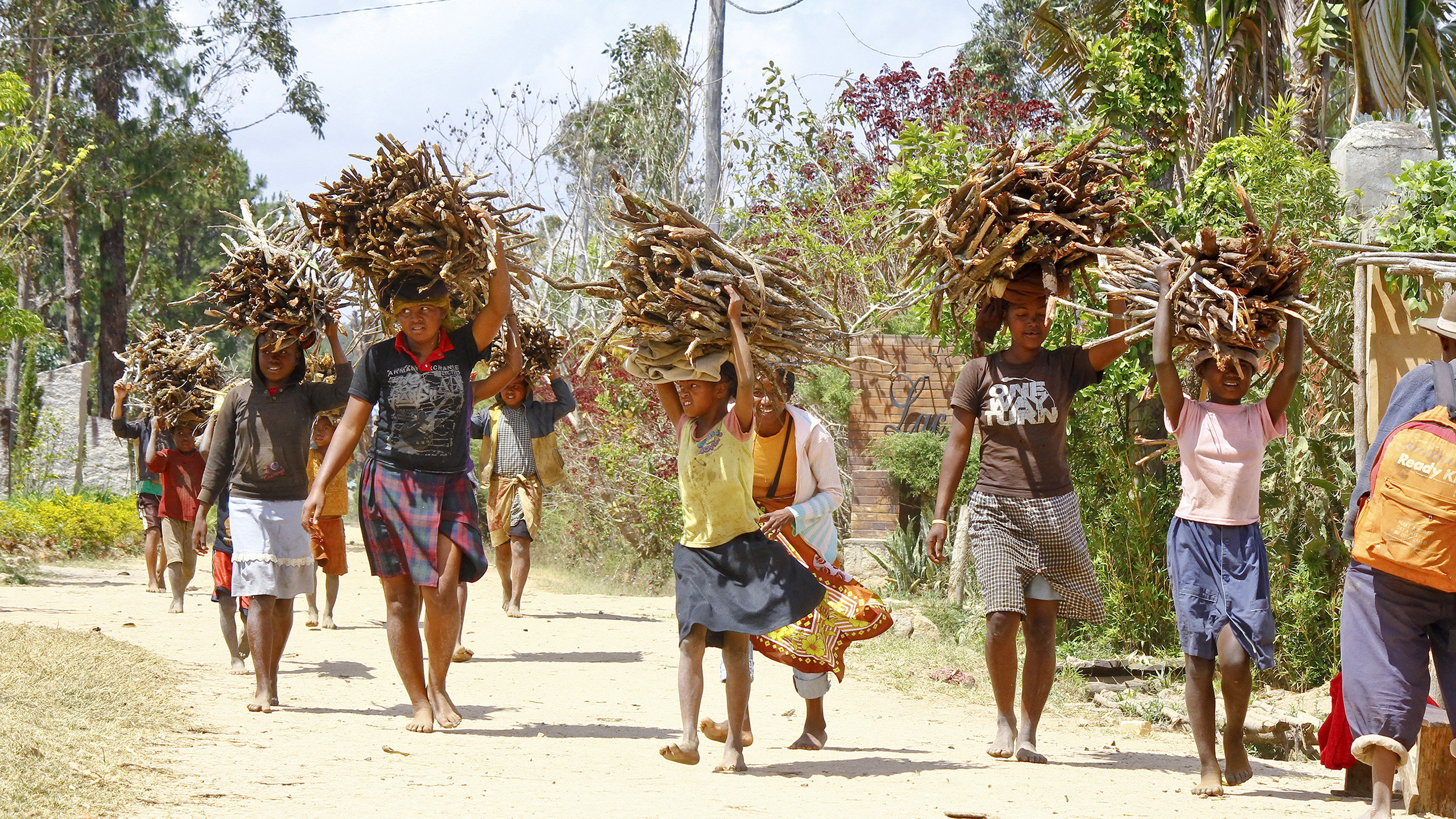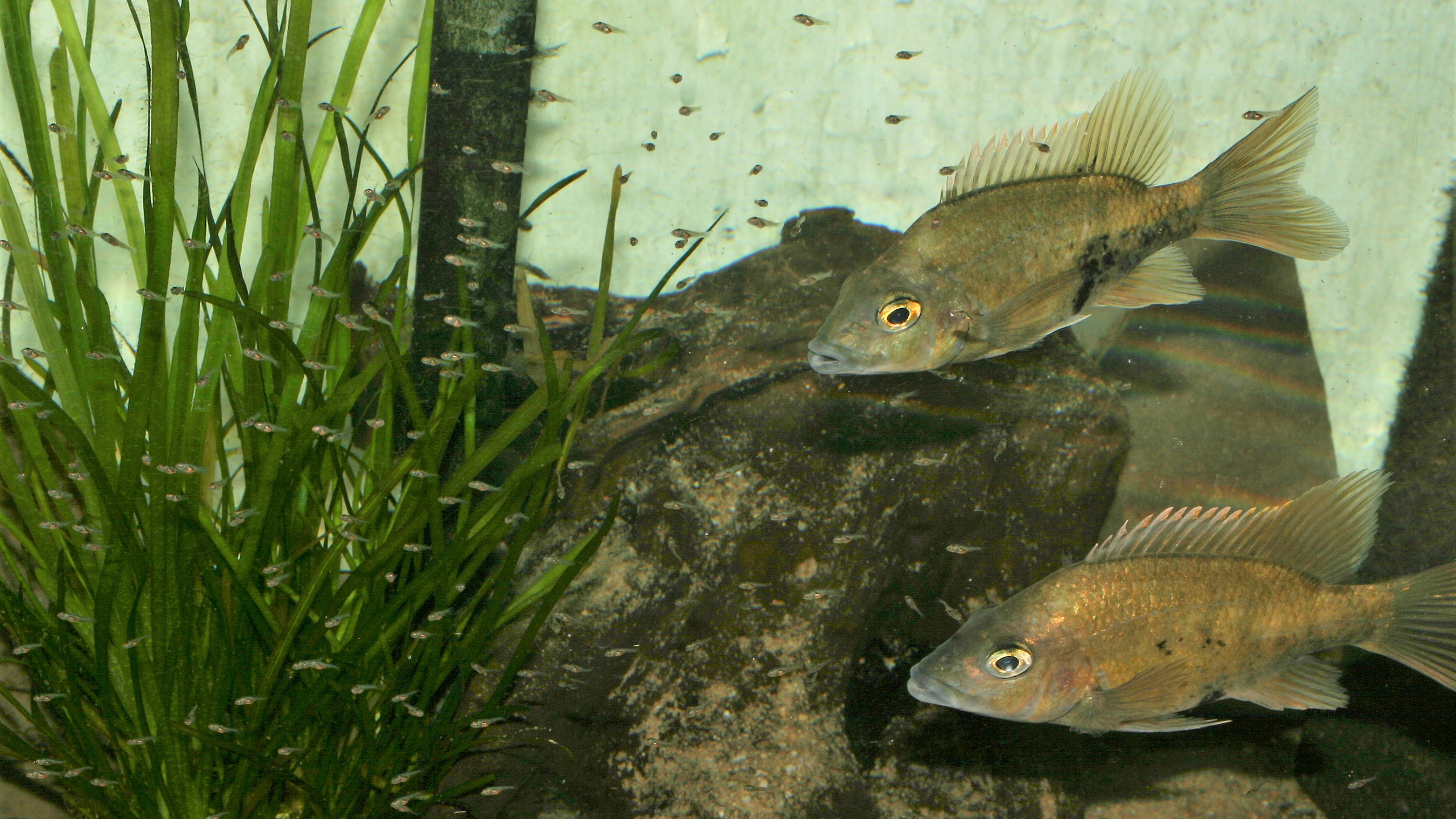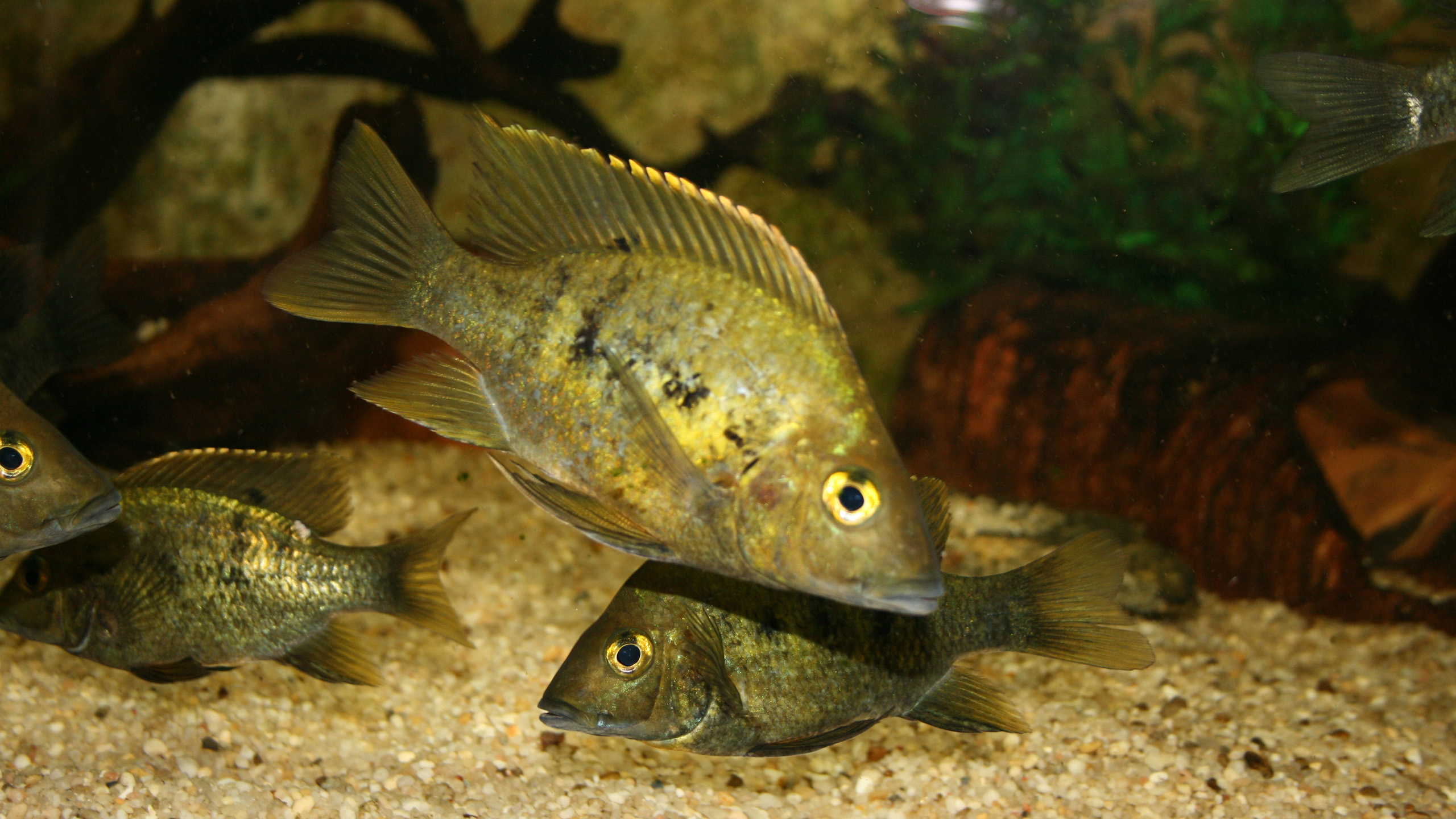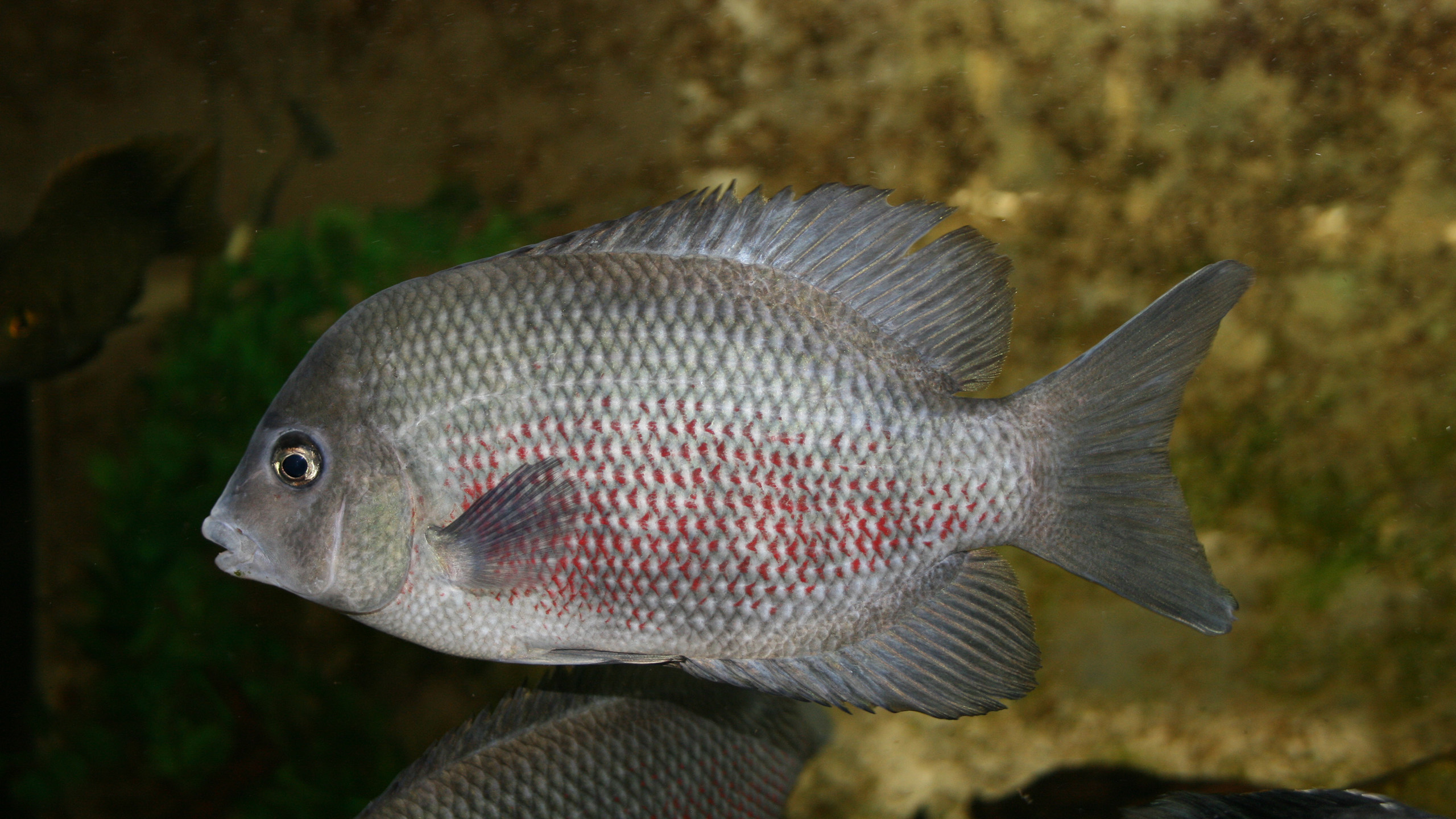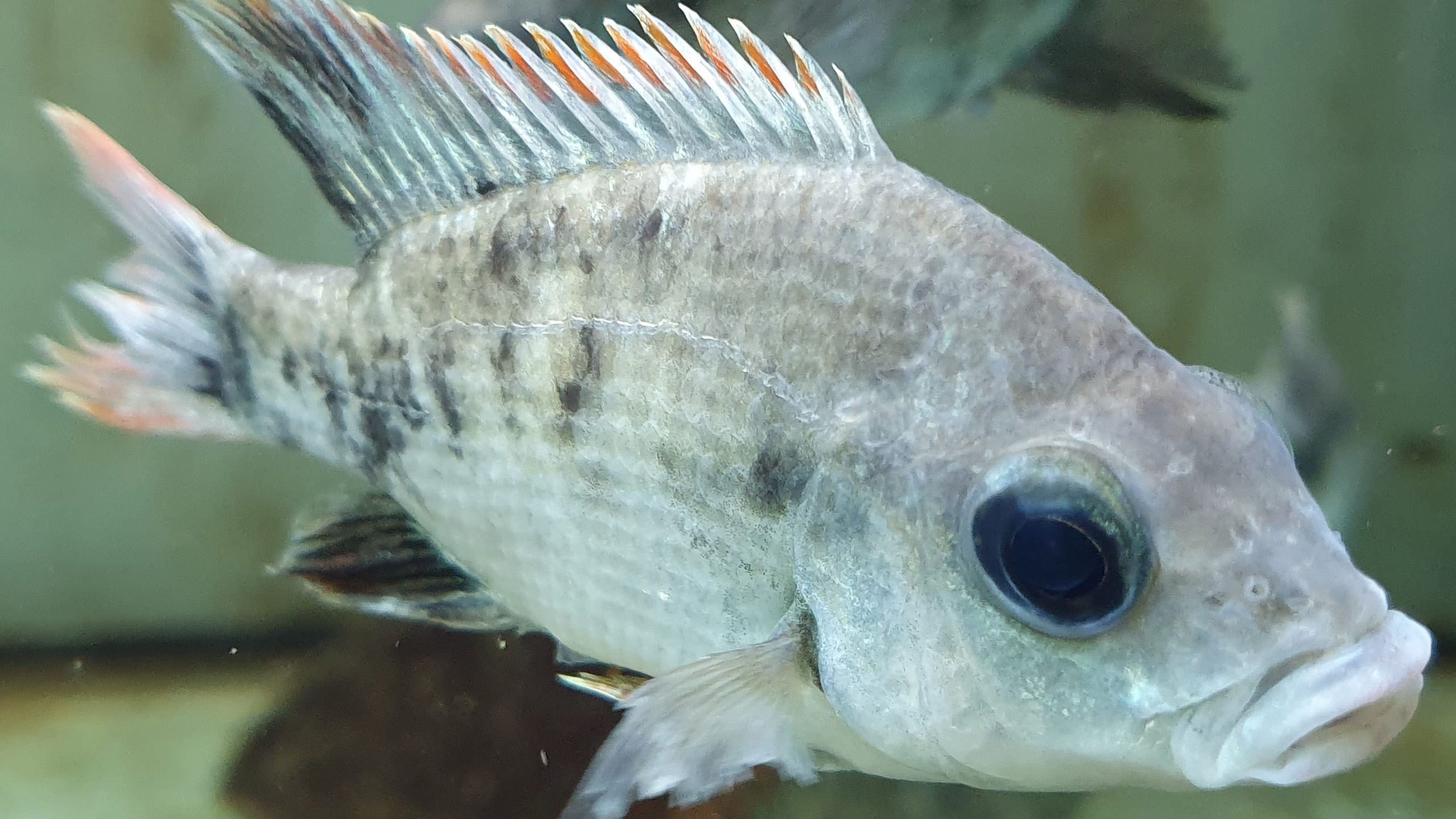Loiselle’s Ptycho
Ptychochromis loisellei
Loiselle’s Ptycho
Ptychochromis loisellei
CC goal
16 breeders
Status 11/2025
CC goal
192 animals
Status 11/2025
CC goal
16 breeders
Status 11/2025
CC goal
192 animals
Status 11/2025
In 2019, a group of experts met at the Cologne Zoo, driven by concern for the nature of what is actually one of the most biodiverse spots in the world. The Madagascar Fauna and Flora Group is trying to do something about the rapid loss of habitats and species on Madagascar – like the Loiselle’s Ptycho (Ptychochromis loisellei) But the situation is depressing: Madagascar, the fourth largest island in the world, is also one of its poorest countries. Forests are disappearing at a breathtaking rate, rivers are being polluted by erosion, and introduced species are wreaking havoc. A real disaster scenario. Among the vertebrates, the most threatened is a group that hardly anyone has on their radar: freshwater fish.
Ecocatastrophe area Madagascar
Endangered and vulnerable
The hard facts: All fish species that live exclusively in freshwater on Madagascar are endemic, i.e. they do not occur anywhere else in the world. 17% of them are considered “endangered,” 34% are “critically endangered,” 22% are “endangered,” and 4% have already disappeared. As the destruction continues unabated, experts agree that the only chance to save many of the species is to preserve them outside their habitat, in human care.
Malagasy cichlids - threatened diversity
A short appearance?
Loiselle’s cichlid is also affected. The up to 20-centimeter-long, high-backed fish shows a remarkable color change: For most of the year, it is inconspicuously blue-green in color, but in the mating season it suddenly shines in a strong golden yellow. We haven’t known about it for a long time – it was only scientifically described in 2006, under the name Ptychochromis loisellei. But hardly has it officially taken the stage it’s already threatened with extinction. Its Red List status is “Endangered”.
Loiselle's cichlid was named after a biologist who started his career as an amateur aquarist - now amateur aquarists are helping to save it.
Display aquarium for endangered Madagascan freshwater fish at Cologne Zoo © Thomas Ziegler
Distribute fish – and risks
Back to Cologne. In view of the emergency, the Madagascar Fauna and Flora Group decided to set up a conservation breeding network for the endangered Malagasy freshwater fish. Loiselle’s cichlid was not represented at all in Europe until then as well as other Madagascar Cichlid like the Mangarahara Cichlid. Outside Madagascar, it was previously only kept in Canada, at the Toronto Zoo. However, the basic idea of a good conservation breeding is to spread the animals and thus also the risks. Therefore, the first Loiselles cichlids came from Canada to the Rhine in the same year. And apparently felt as comfortable there as a fish in water, because they soon provided for offspring.
A network for everyone
To build up a stable conservation breeding, however, more than a successful zoo is needed. The genetic range should be preserved, inbreeding should be prevented, and a demographically balanced population should be built up. Because the long-term goal is: A reintroduction in the original home in better times must remain possible. Therefore, breeding in Cologne should become a conservation breeding network.
Loiselle’s cichlid nursing its fry – at mating time the fish change color to a brilliant golden yellow. © Miguel Vences
Closing the circle
Because there are many dedicated private aquarists who can actively help, Loiselle’s cichlid came to Citizen Conservation. In a way, this closes a circle for him. Not twenty years earlier, he was named after Dr. Paul V. Loiselle, a biologist who began his remarkable career more than 50 years ago as a private aquarist, wrote numerous books on hobby aquatics, became curator of freshwater fishes at the New York Aquarium, and is now retired as one of the leading experts on Malagasy fish conservation at the World Conservation Union.
For breeders
Basic information on biology and breeding
A Madagascan cichlid species that is easy to keep, but can react aggressively within the species. Aquariums of at least 1.5 m length and 500 l water volume are suitable for keeping a group of approx. 8 adult specimens. Good experiences in keeping and breeding have been made so far with the following values: temperature 24 – 25 °C, carbonate hardness 3° dH (KH), GH 5, 230 microsiemens, 7.5 pH. Suitable food: commercially available flake food; frozen food (white, black and red mosquito larvae and brown shrimps); live food (artemia, white mosquito larvae).


